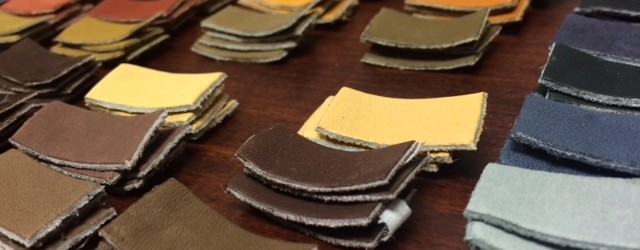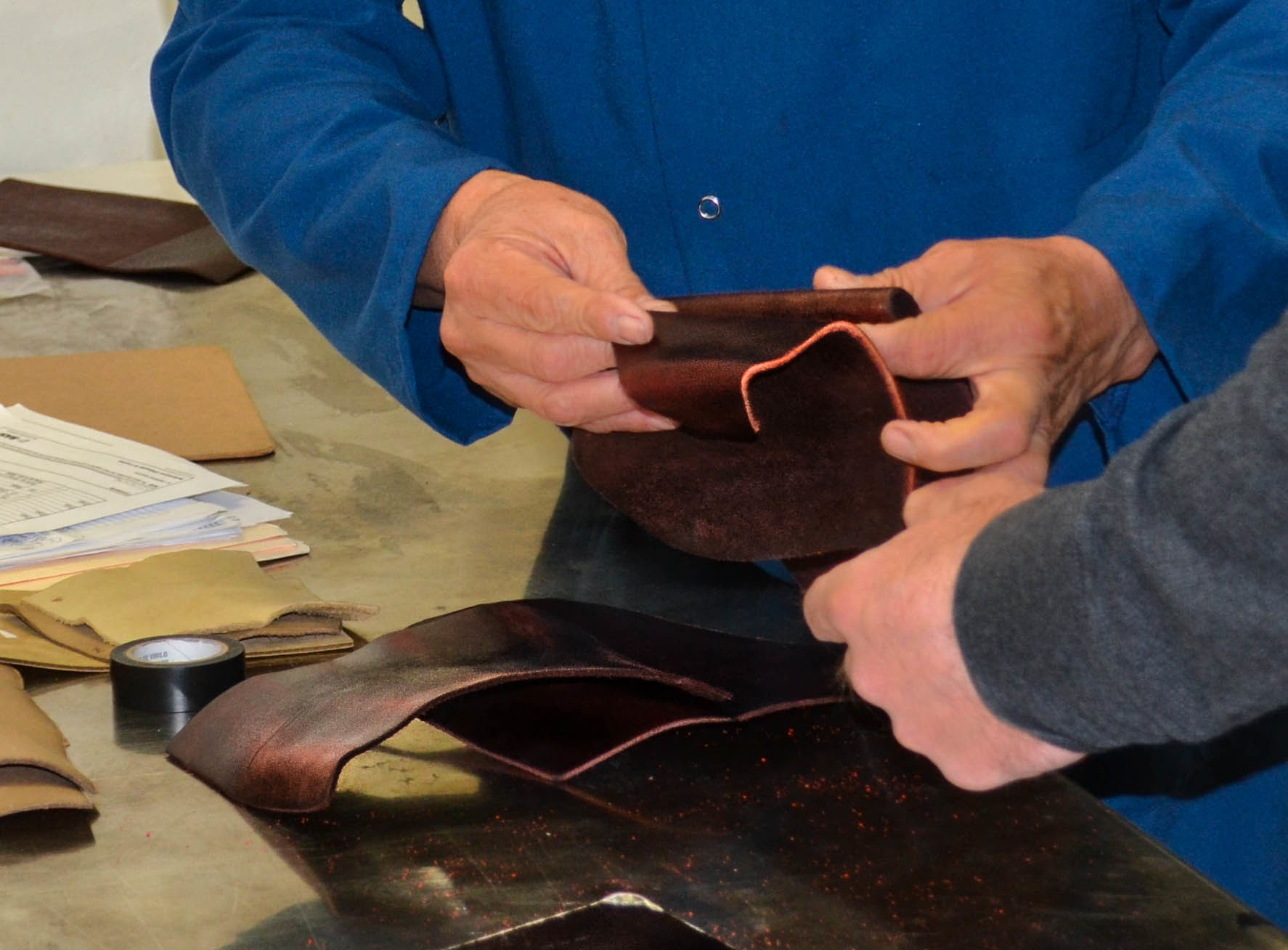The Best Products for Leather Lightfastness
Lightfastness: The property of dyes and pigments that indicates how resistant the color is to fading when exposed to light.
When you are making a leather for auto, upholstery, or garment applications, you need very good lightfastness properties. Since these leathers will be regularly exposed to daylight, it’s important to choose dyes and pigments that can withstand the exposure to prevent fading or color change.
In order to meet high lightfast requirements, we have to choose products that will help make leather comply with customer specifications. A leather color technician can help you create a formula to meet your standard. We’ll go through a general formula we use at our FSW Leather Applications Lab below.
Select Lightfast Dyes – Penetrol & Penesul
Let’s review a formula that will use products that will help with the lightfastness properties.
The first step is to choose a range of dyes that will the best brown or black shades. For a basic range, we recommend the following FSW dyes:
| Penetrol Brown NGB | Penetrol Brown MFR | Penetrol Brown NR |
| Penetrol Brown NT | Penetrol Red Brown NB | Penetrol Brown H |
| Penetrol Brown N3G | Penetrol Black NT | Penesul Black RT Conc |

FSW recommends this complementary range for shading:
| Penetrol Beige FS | Penetrol Yellow R | Penetrol Orange NR |
| Penetrol Bordeaux B | Penetrol Dark Blue NB |
These two sets of dyes will enhance lightfastness and resistance to migration. They’re some of the best from our dye ranges to resist fading and keep their natural color.
Choose the Right Syntan for Retanning
Once the leather is neutralized, we recommend to use a retanning syntan to help the lightfast properties. Sortan SKM is a product with good neutralization and buffering action. This makes it particularly fitting as a neutralizing tanning agent in the retannage of leather. Especially where fullness of shade, levelness, and very good lightfastness is required.
Incorporate Retanning Agents for Fullness & Brightness
When leather is being retanned, we recommend a condensation product of Phenol retanning agent and a sulfonic retanning agent. FSW’s Sortan W and Sortan FS products will impart high lightfastness and soft fullness to the leather. With these products, leather responds very well to dyeing so you can achieve brilliant, level shades.
Pick a Fatliquor to Refine Your Leather
We recommend using Meropol Oil 910 when the leather is ready to be fatliquored. This anionic fatliquor comes from the family of sulfited esters. This solvent-based fatliquor is oxidized, consists of fatty alcohols, has no odor, and it is not hazardous to water supplies. Meropol Oil 910 provides an excellent, uniform, high penetration effect. As a result, you get soft leather with a slightly greasy, light touch without affecting shade and uniformity of the color.
Other notable features of Meropol Oil 910 include its resistance to yellowing and low-fogging values. Combined, these characteristics make for an excellent product to use on leathers require very good lightfastness properties.
Finish with a Fixing Agent
 It is key to use a fixing agent in order to bind and exhaust all dye into the
It is key to use a fixing agent in order to bind and exhaust all dye into the
leather. Our Merofix EC is a cationic fixing agent and can be used for the intermediate and final fixation of the anionic dyes, fatliquors, and retanning agents. This product has very good lightfastness properties.
Usually it is recommended to apply dye feeds three times:
- When the dye penetrates the leather,
- Once the leather is penetrated, after the acid Merafix EC is applied at 0.5 %, and
- After the dye and formic acid drain, in a new float at application rate of 0.5 % of Merafix EC.
In order to obtain a high standard of lightfastness, care must be taken to ensure that all the fatliquors, tanning agents, and other chemicals applied together are equally resistant to yellowing and light. Start with high quality dyes, choose the chemicals that provide the characteristics you’re seeking for your leather, and work with a technician to put a workable formula together for your operations.
For more information on the FSW Leather Applications Lab and leather colorants and chemicals below.



